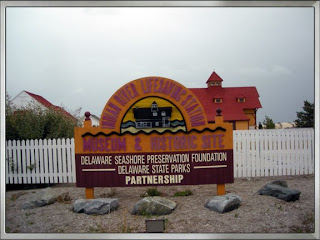.
An article from the Wednesday, February 2nd 1874 edition of the New York Times contained a report to then secretary of the treasury William A. Richardson which declared:
.
“We have the honor to report that we have employed all available means to obtain as complete information as possible in the respect referred to, By conferring with ship owners, ship masters, underwriters, wreck commissioners, officers of the customs and others likely to be informed as to the frequency and cause of shipwrecks…”
.
The commission had been charged with determining “The number, situation, character and cost of life stations needed upon the coast of the United States.” Under the recommendations for the Atlantic coast they identified a need for two complete Life Saving Stations in Delaware: One at Cape Henlopen and another a few miles south at Indian River.
.
 .
. Complete stations were to be those that served an isolated area far from settlements where shipwreck victims could find themselves safely ashore and yet still die of exposure or starvation. These stations would be “furnished with rocket and mortar apparatus, life-cars, surf-boats and all other appliances adapted to the saving of life from stranded vessels, together with the means of succoring the shipwrecked.”
.
At the behest of the commission the people of the United States invested somewhere in the area of five thousand, three hundred and two dollars and fifteen cents and in 1876 the Indian River Life Saving Station came into service. More information about the life of the station after it was built can be found HERE and at the Harbour Lights website.
At the behest of the commission the people of the United States invested somewhere in the area of five thousand, three hundred and two dollars and fifteen cents and in 1876 the Indian River Life Saving Station came into service. More information about the life of the station after it was built can be found HERE and at the Harbour Lights website.
.
.























No comments:
Post a Comment